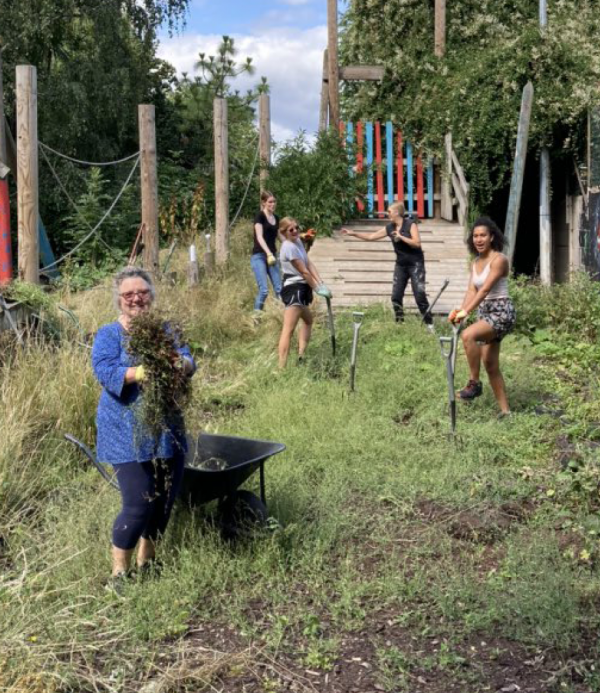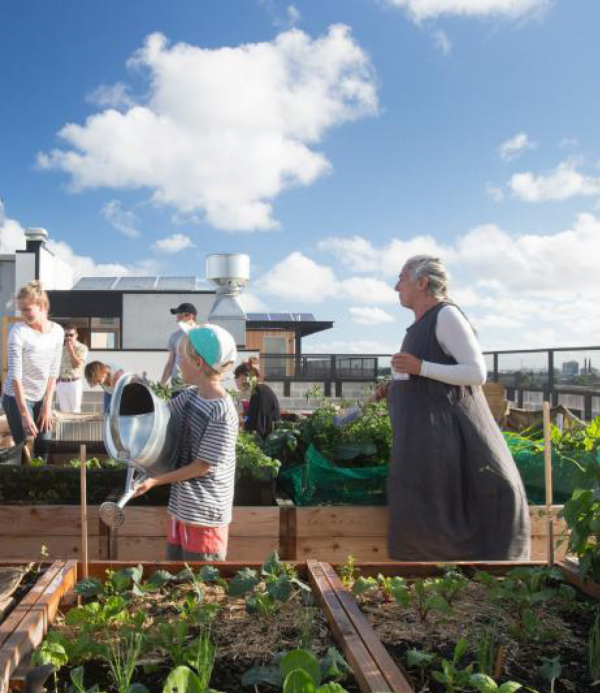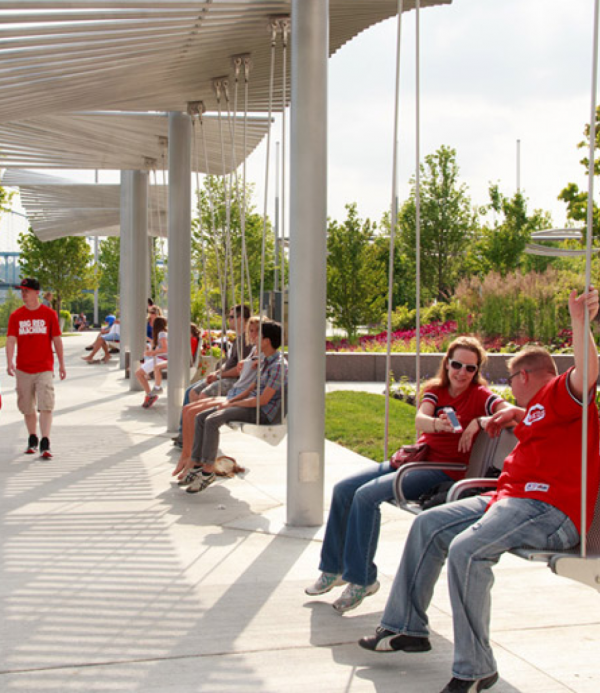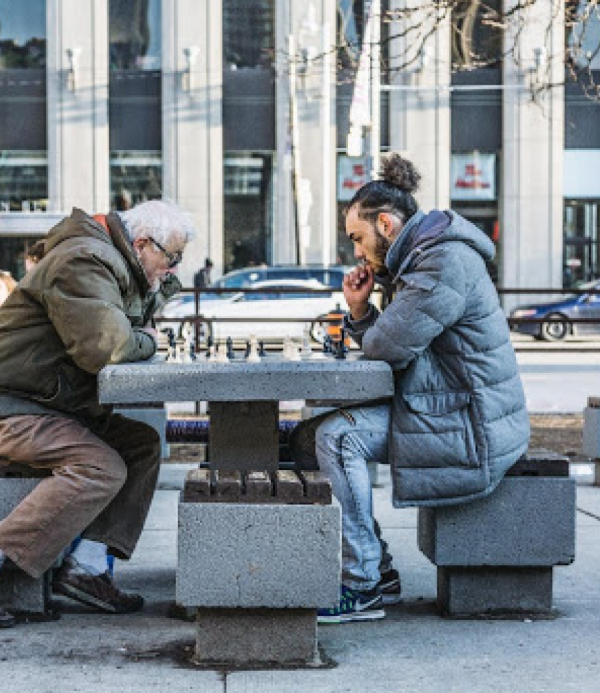Streets and spaces
Ngā tīriti me ngā ātea
Designing streets and spaces with older people in mind helps foster community connections and can have health and wellbeing benefits for everyone.
Enable community connections
Whakamanahia ngā tūhono hapori
Spaces that encourage positive socio-cultural activity – whether it's passive or active – are good for the wellbeing of individuals and for community cohesion.
Designing outside spaces that are useable for older people allows them to be involved in the activity on the street or in the park and build connections in the community. As they are more likely to be present during the day, they can also act as eyes on the street for the community.
Design tips
Hei whakaaro whakahoahoa
- When designing street furniture such as seating, ensure there are backs and arm rests and that the seat is not too close to the ground. This will provide functionality for people of all abilities.
- Make spaces engaging and fun for both older and younger people to be in together. For example, The Hamilton Lake Domain contains walking tracks that link with playgrounds and a café and gardens with clear views across the lake. It also connects with the city’s cycle path and public transport links. Read the Hamilton Lake Domain's Management Plan (22,151 KB)
- Use collaborative processes during the design phase so older people get a say in how spaces can be used.
- Collaborate with older people to come up with ways to adapt spaces to support projects they can participate in. This may be through ‘greening’ projects like community gardens, programming events, and temporary or ‘tactical urbanism’ projects.
- Work with kaumātua and kuia from local iwi and hapū to create opportunities within public spaces to reinforce the relationship between people and the landscape. This helps to provide a sense of place and belonging for all people. Kaumātua and kuia will often have an in-depth knowledge of the local landscape and its history and a desire to share these stories. A great example of this is Nga Whāriki Manaaki, woven mats of welcome in Christchurch.
- Co-design and configure existing spaces and streets as connected ‘loop’ networks that allow for active movement like walking and cycling, to suit both shorter and longer range capability.
Provide comfort and safety
Kia hāneanea, kia haumaru
If spaces are comfortable and safe they will be well used, respected, and the community will take ownership, giving a sense of place and identity. People act as informal guardians of spaces they like to spend time in, so maintenance is also likely to be easier.
Comfort and safety comes from:
- warmth
- shade in summer
- shelter
- seperation from noisy traffic
- ergonomic seating
- senses interest such as from trees and foliage colour
- easily interpretable spatial layout
Design tips
Hei whakaaro whakahoahoa
- Design busy streets with a cross section of zones. Create plenty of room for pedestrians, furniture, signs and lights. Ensure that the width allocated for pedestrian movement and for furniture is clear. Place signs and lights at the edge.
- Position new parks and orientate streets to retain and reflect local landmarks and distinctive features (eg, historical and cultural references)
- Ensure parks and streets are orientated to views and have comfortable seating that allows people to look out over the area and see what's going on.
- Co-design ‘dwelling’ spaces and streets for comfort
Health benefits
Ngā hua hauora
Proximity to parks, green spaces and neighbourhood streets can:
- help to increase activity levels
- increase vitamin D levels through healthy sun exposure
- reduce stress
Useability
Whakamahinga
Making outdoor spaces easy for people to get around and spend time in enhances their confidence and independence and enables them to participate in their communities. This is especially important for people with dementia, sensory and physical disabilities who may find it more difficult to negotiate environments.
Design tips
Hei whakaaro whakahoahoa
- Identify the streets and spaces that are intended for people to move through, spend time or 'dwell' in and design these streets and spaces to match this.Identify the streets and spaces that are intended for people to move through, spend time or 'dwell' in and design these streets and spaces to match this.
- Make it easy to negotiate streets and spaces. Rationalise the positioning and numbers of signs and street furniture installations eg, group bins, seats, and lighting. Think about where e-vehicle charging stations are placed – avoid trip hazards and check they won't block the view of oncoming traffic or pedestrians.


Spaces that allow people of all ages to participate in public life and adapt them together builds community

Seating designed to allow rest and playfulness – sheltered from sun and mixes suitability for all ages – Cincinnati.

Encouraging social interaction in street design.